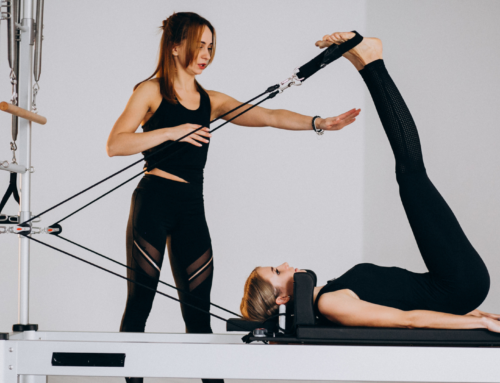Did you know that nearly 2/3rd of pregnant women suffer from ab separation? It’s most common in the third trimester of pregnancy and after child birth. In fact a lot of women may not even realise that they have ab separation until a health professional diagnoses them. This is because it does not cause pain in the tummy area as you would think. So women think they don’t have it and get back to exerciising too soon only to develop aches and pains in their lower back or even pelvic area. So it’s very important to have a follow up with a physiotherapist after child birth who can assess you for it. They will not only assess you for ab separation but also show you exercises for recovery especially pelvic floor. There are some tell tale signs of ab separation that can help you assess yourself to some degree. These are as follows:

Signs of ab separation
Why does ab separation cause back pain?

The main reason for ab separation is the tremendous amount of pressure that’s put on the tummy muscles and the back during pregnancy and child birth. It’s important to understand that the muscles don’t actually tear. They get separated though the middle. But it still causes massive stretching of the muscles and in turn weakness. Now the tummy muscles actually protect the lower back in conjunction with the muscles of your back. So when there’s ab separation, the tummy muscles become weak and are unable to support the back well. The deeper abdominal muscles actually form a natural brace for the spine and protect it during strenuous activities. With no support from the abs, the strenuous activity can cause inflammation around the structures of the lower back that are already strained from pregnancy and child birth. Things like bending, lifting and prolonged sitting are the main culprits for lower back pain. And these are the exact movements that are required by a new mother post pregnancy. Hence, this creates addes pressure and can lead to lower back pain due to ab separation.
How to treat ab separation?

Physiotherapy is THE most effective treatment for ab separation post pregnancy. As a physiotherapist with over 15 years of experience treating mothers suffering from lower back pain, I certainly focus on a holistic treatment. We don’t just show exericses to treat ad separation but get to the other aches and pains that are complicating recovery. Because pain inhibits the muscles , it’s crucial to be free of back pain to get the most effective treatment. We use techniques such as joint mobilizations and soft tissue release to relieve back pain. Once that’s achived, core and pelvic floor strengthening through reformer pilates is very effective in treating ab separation. High intensity exercise in the post partum period can make things worse. Low intensity exercises are good for your joints and very effective in treating ab separation.
If you or anyone you know is suffering from back pain post pregnancy, give us a call to book with our physio and assess of ab separation could be the cause.






